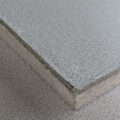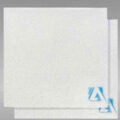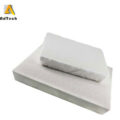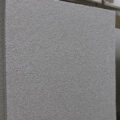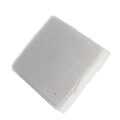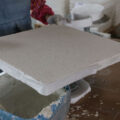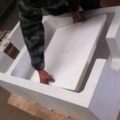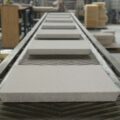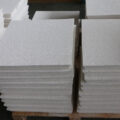The ceramic filter plate is an energy-saving and environmentally friendly product, which is widely used in the dehydration process of metal ore operations such as iron, gold, silver and copper. It plays a vital role in energy-saving and emission reduction. For use in most cases, the dry material is generally left for the ceramic filter plate, and the filtrate is discharged. However, for some special industries, such as certain chemical industries, where the filtrate needs to be left, then the filtration requirements for ceramic foam filters need to be very high.
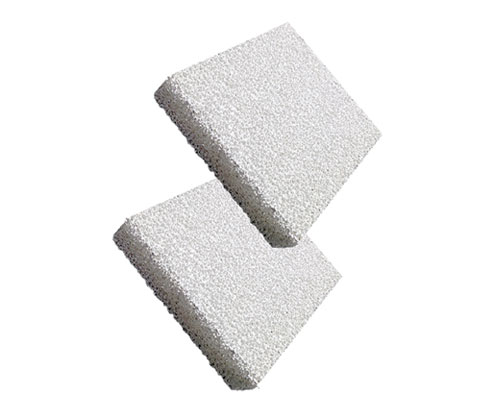
Ceramic Filter Plate Structure
The ceramic filter plate structure prepared by the traditional process is divided into the following three parts:
Surface layer: the thickness is generally controlled at about 1mm. As the main filtration area, the filtration accuracy of the ceramic filter plate depends on the pore size and thickness of the layer.
Bearing layer: The thickness is generally controlled at about 11.5mm. In order to support the area, the entire surface layer is lifted up, and at the same time it also plays a role in improving the overall strength of the ceramic filter plate. It has no effect on the filtering accuracy of ceramic filter plates.
Water channel layer: It is the channel layer. Provide water channel for filtration and backwashing.
In the current production process, because the chemical industry has high filtration accuracy and the residual particle size after filtration is relatively fine. It is easy to block the ceramic foam filter plate in the actual production process, which seriously affects the service life of the ceramic plate. This is mainly because the thickness of the carrier layer is too thick in the anti-cleaning process. In the reverse cleaning process, water needs to pass through the bearing layer to reach the surface layer, and the particles clogged in the surface layer are reverse cleaned. If the bearing layer is too thick, it will greatly reduce the cleaning of the opposite layer by the backwash water.
Ceramic Foam Filter
In order to solve this problem, the current solution is best to reduce the thickness of the bearing layer, but the reduction in thickness will reduce the overall strength of the ceramic plate. In order to solve this problem, we propose new design ideas.
The preparation method of the ceramic filter plate includes the following steps:
- Raw materials are mixed to prepare casting slurry and water channel layer slurry;
- Use water channel layer slurry to prepare support unit;
- Mold forming: the cast slurry is injected into the mold, and the thickness of the surface layer is controlled according to the slurry suction time of the mold; then the prepared support unit is put on one surface of the surface layer, adjacent supports There is a gap between the units for the water supply flow, and the water flow can flow to the surface layer through the gap;
- Dry molding and firing.

